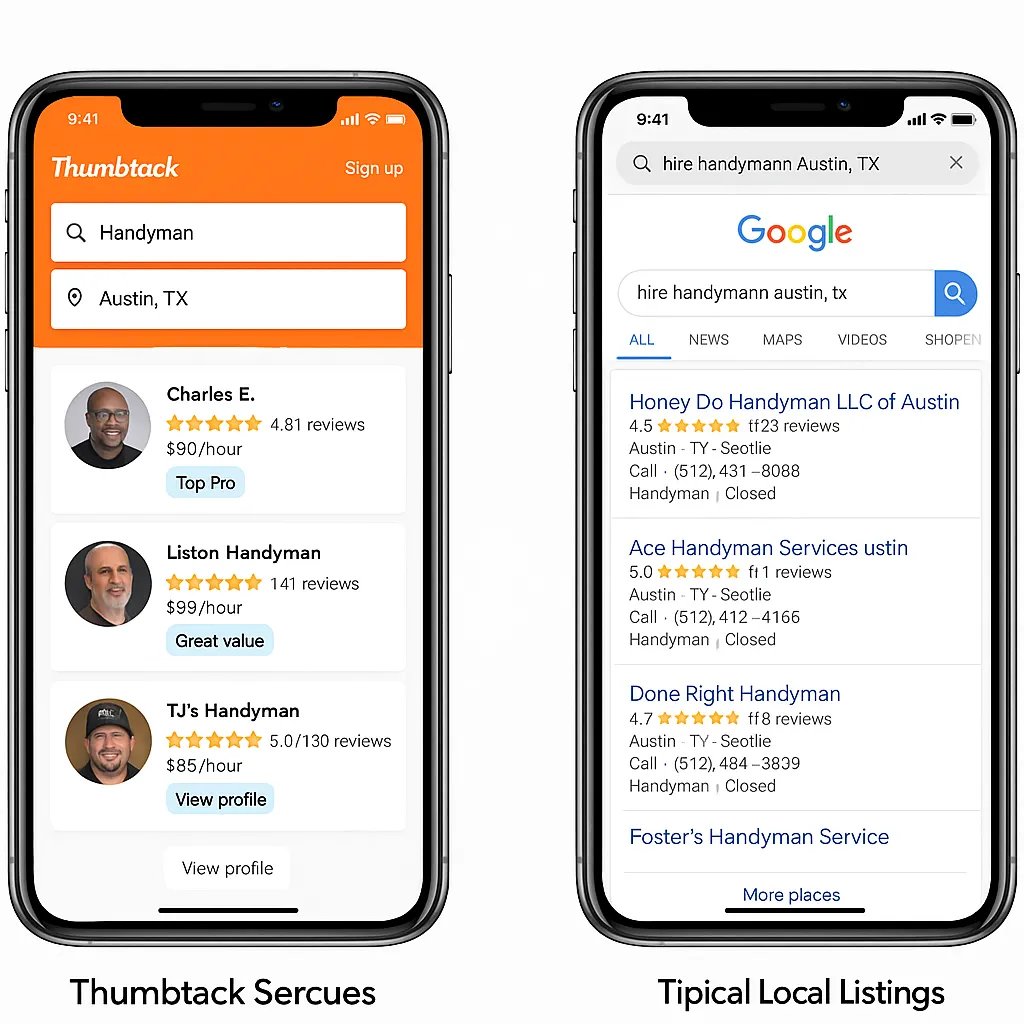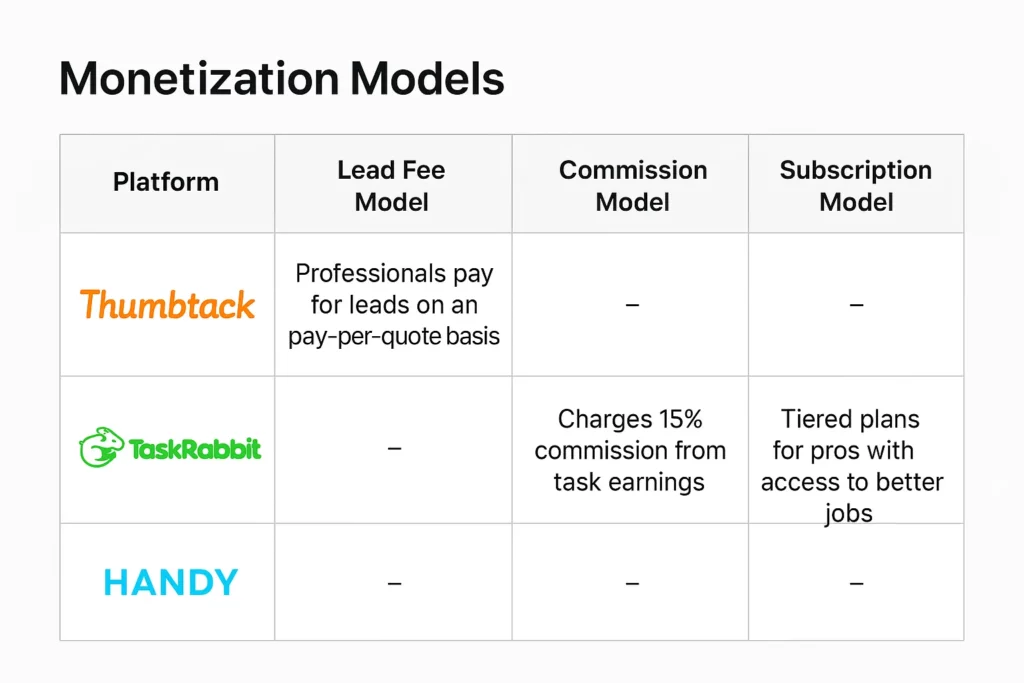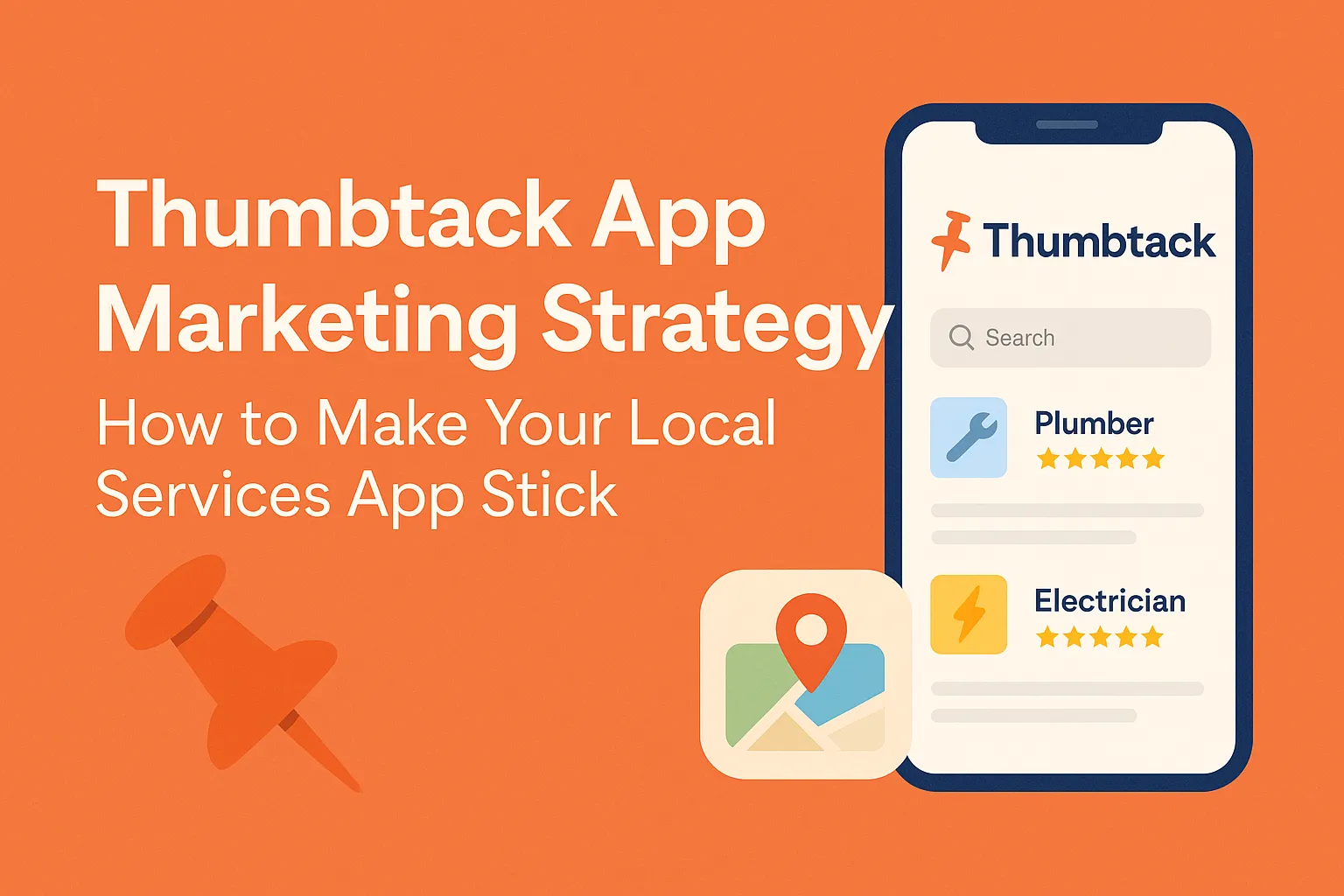Ever tried to find a plumber at 9 PM or a wedding photographer two weeks before your big day? If yes, you’ve probably stumbled upon Thumbtack—or wished something like it existed. Thumbtack didn’t just solve a problem; it created a platform where handymen, DJs, house cleaners, and tutors could get booked without cold-calling or classified ads.
If you’re building a Thumbtack clone using TechCrunch like marketing strategy or any kind of local service marketplace, you’ve got one half of the puzzle solved: supply and demand. The tricky part? Getting noticed. Marketing a service-based app like Thumbtack means targeting homeowners and hustlers at the same time—and doing it smarter, not louder.
This post walks you through how Thumbtack cracked the code, and how you can market your local services app like a pro. (Spoiler alert: if you’re still building the app, Miracuves can make sure your clone doesn’t just work—it wins.)

Breaking Down Thumbtack’s Winning Formula
Thumbtack didn’t start out with billion-dollar backing or viral buzz. It grew with smart, strategic marketing that hit people where they live—literally.
1. Hyperlocal SEO at Scale
Thumbtack’s biggest weapon? Landing pages. Lots of them.
- “Affordable electricians in Austin”
- “Top-rated piano teachers in Chicago”
- “Best house cleaners near me”
These long-tail local keywords drove free, high-conversion traffic to the app, and Google loved it.
2. Early Google Ads with a Local Twist
Thumbtack didn’t just run broad search ads—they focused on buyer-ready intent:
- “Hire a handyman fast”
- “Same-day plumber service”
- “Backyard wedding DJ”
They knew that when someone’s searching for these, they’re ready to book. Not browse.
Learn More: Build an App Like Thumbtack: Developer Guide for PHP & Node.js
Who You’re Actually Marketing To (Hint: It’s Two Tribes)
Like any two-sided marketplace, your app needs to attract both service providers and service seekers—and their priorities couldn’t be more different.
Service Providers (Pros)
- Goals: Consistent work, better-paying clients, reviews
- Pain Points: Job droughts, undercutting competition, flaky leads
- Hangouts: Facebook Groups, LinkedIn, trade forums, YouTube DIY channels
Service Seekers (Clients)
- Goals: Speed, affordability, reliability
- Pain Points: No-shows, poor communication, hidden fees
- Hangouts: Google search, Instagram, Reddit, Nextdoor
Pre-Launch: Set the Stage Like a Pro
Before the app is even live, you should be planting seeds of curiosity and trust.
1. Build a Local Waitlist
Create geo-specific landing pages like “Be the first to join [YourApp] in Atlanta.” Offer early-bird perks, priority listing, or fee waivers.
2. Leverage Facebook and Nextdoor
Use community groups to soft-pitch your platform. Start conversations like “What’s the biggest pain when hiring a local pro?”
3. Partner With Local Influencers
Find real estate agents, food bloggers, and local event planners—they’re trusted voices with built-in audiences.
Post-Launch: Let the Flywheel Turn
1. Empower Providers to Promote
Give every pro a shareable profile link and a “Book me on [App]” badge for their site, Instagram bio, or business card.
2. Ratings + Response Times = Trust
Gamify service providers: the fastest responders and highest-rated get spotlight placement.3.
3. Automate Push Alerts
“Someone nearby just requested your service.” Instant dopamine hit. Service providers will engage.
4. Retarget & Remind
Use retargeting ads for job seekers who browsed but didn’t book:
“Still need a gardener? Top-rated pros available now.”
Go Hyperlocal or Go Home
National visibility sounds sexy. But Thumbtack started local, nailed it, and then scaled.
Hyperlocal Playbook Features:
- Add city and neighborhood filters
- Enable GPS-based auto-suggestions
- Create local landing pages with user reviews
- Push out seasonal gig content: “Hire snow removal near me” in January
Learn More: Thumbtack Features Breakdown for Startup Founders
Monetization + Marketing = Growth Fuel
Thumbtack’s Revenue Strategy
- Lead fees (pros pay to bid)
- Subscription packages
- Pay-per-click listing boosts
Add-On Tactics You Can Try
- Featured vendor spots in app banners
- Badges like “Verified,” “Top Choice,” or “Fast Response”
- Automated review requests post-service
ASO (App Store Optimization) for Local Success
App Title Example:
“QuickFix – Find & Book Local Pros Instantly”
Keywords to Bake In:
- home services app
- local handymen booking
- nearby house cleaner
- Thumbtack alternative
Don’t forget your screenshots: show the booking flow, pro profiles, and review features.
How to Build Your Own Thumbtack App with Miracuves.

Conclusion
Launching a local services app like Thumbtack is about more than features—it’s about fit. Fit for your users’ lifestyle, fit for their pain points, and fit for how they discover and hire. Market where it matters: locally, authentically, and with tools that turn everyday users into brand evangelists.
At Miracuves, we help innovators launch high-performance app clones that are fast, scalable, and monetization-ready. Ready to turn your idea into reality? Let’s build together.
FAQs
What’s the biggest marketing challenge for a Thumbtack-style app?
Balancing two audiences—providers and clients—at once. You’ll need separate acquisition strategies and onboarding flows.
Is SEO really that important for local apps?
Absolutely. Local SEO is Thumbtack’s secret sauce. It’s free, high-conversion, and builds trust with location-based content.
Should I launch nationally or start in one city?
Start narrow. Launching in one city helps you build liquidity and refine your experience. Then scale.
How can I get service providers to join early?
Offer zero commission for the first 90 days, highlight them as “Founding Providers,” and give them exclusive perks.
Are app store reviews important for growth?
Very. Especially in local service apps, people rely heavily on peer reviews. Incentivize happy users to leave them.
Can Miracuves help with building AND marketing strategy?
Yes. Miracuves specializes in clone app development that’s built to scale—and we infuse growth strategy from the ground up.








